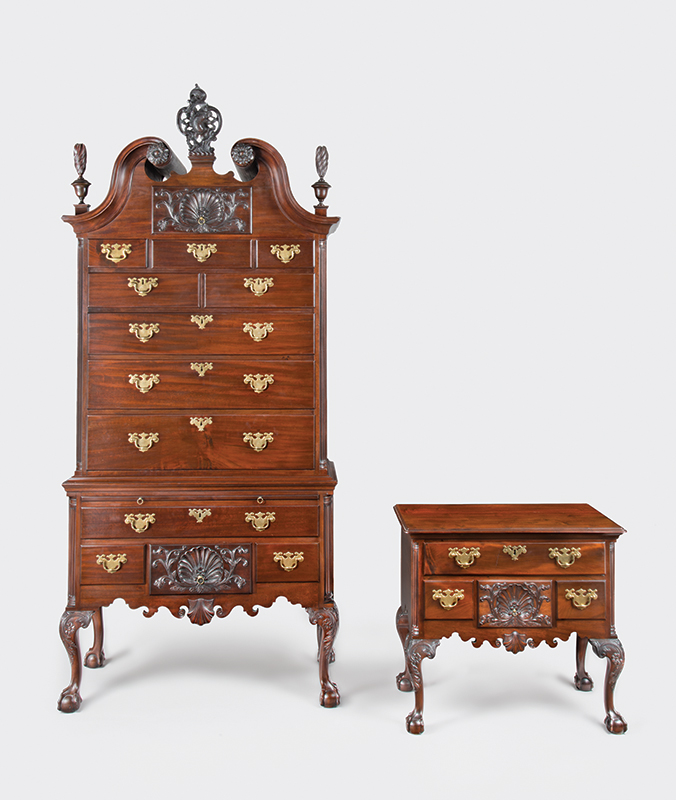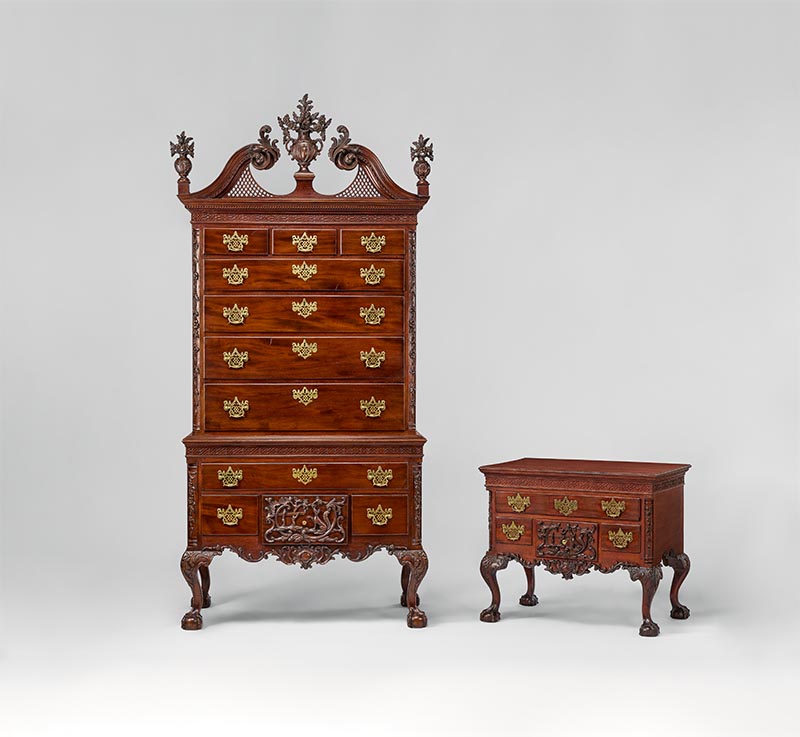
As we stride warily into a new year, after a year like no other, how welcome it is to receive this handsome new publication on the Philadelphia Museum of Art’s esteemed collection of American furniture. For those of us with a passion for American furniture and decorative arts, Zoom gatherings and virtual lectures on museum collections have provided a much needed “fix” during the pandemic, and institutions have been extremely resourceful in their offerings. However, the arrival of an engaging and beautifully made book such as this—a volume to settle in with, and refer back to again and again—feels truly like a gift in these times. Sincere thanks are due to its author, curator Alexandra Kirtley, her institution, and the generous donors who have made it possible.
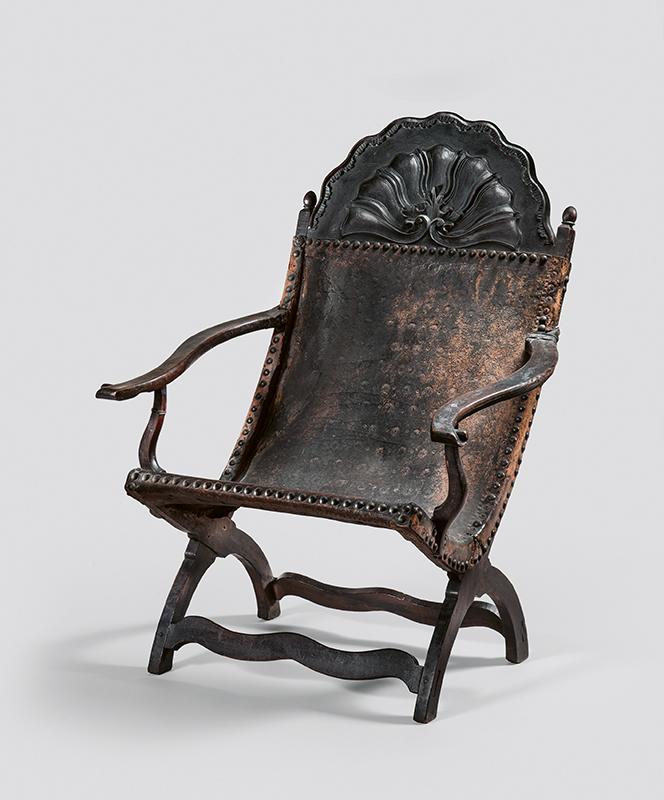
As indicated by its title, this is not an exhaustive catalogue of the collection of American furniture at the Philadelphia Museum of Art, which, according to the author, includes eleven hundred examples, but a carefully chosen group of just under a third of these intended to bring a great collection into focus and to afford it the prominence it deserves. There is solid scholarship here amplified by in-depth research into Philadelphia wills and probate records, histories of ownership, the careful reading of objects, and insights gained by a close and fruitful collaboration between the curator/author and the museum’s conservators.
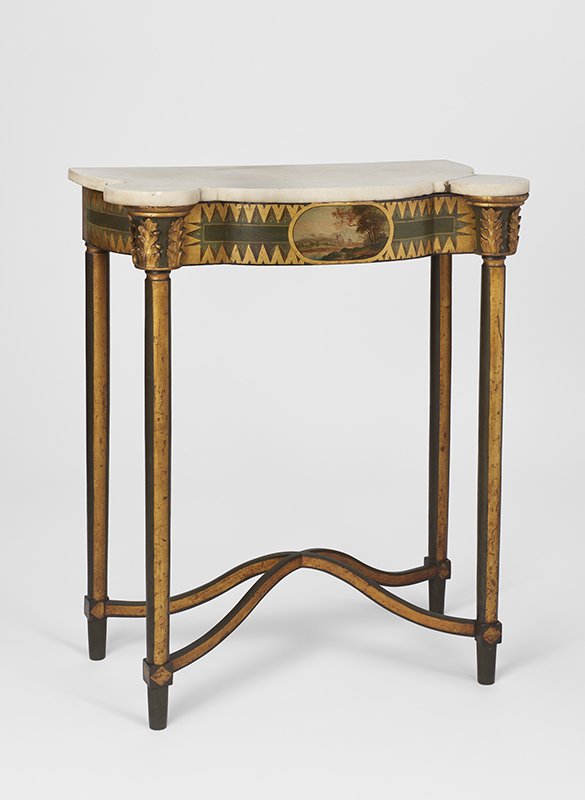
The introductory essay on the formation of the American furniture collection from the time of its founding in 1876 to the present makes it clear why the Philadelphia Museum of Art is “unrivaled [in its] representation of furniture made in Philadelphia and southeastern Pennsylvania.” In Kirtley’s richly textured telling of this story we learn, for instance, of one quaint but eminently practical early approach taken to secure locally made and owned furniture for the museum: a genteel want ad placed in the museum Bulletin in April 1909 under the heading “Antique Furniture Wanted” that appealed directly to the members of any “old family” of Philadelphia to donate their “handsome and rare old furniture” so it “would be permanently preserved for the benefit of posterity.” And in a more contemporary vein, Kirtley candidly reveals the strategizing required to prevent a very important and expensive cornerstone of the collection, the dressing table mate to the celebrated Fox and Grapes high chest (Fig. 1) of drawers, from slipping from the museum’s grasp. Offered to the museum in 2011, after being on loan there since 1976, it was acquired over a five-year period through a combination of the proceeds from some significant deaccessioning and numerous donations. “Conceived,” as the author writes in the catalogue entry “as two parts of a whole,” this remarkable set [one of three such sets included in the book!] is a monument to Philadelphia cabinetmaking and carving excellence in the mid-1700s.
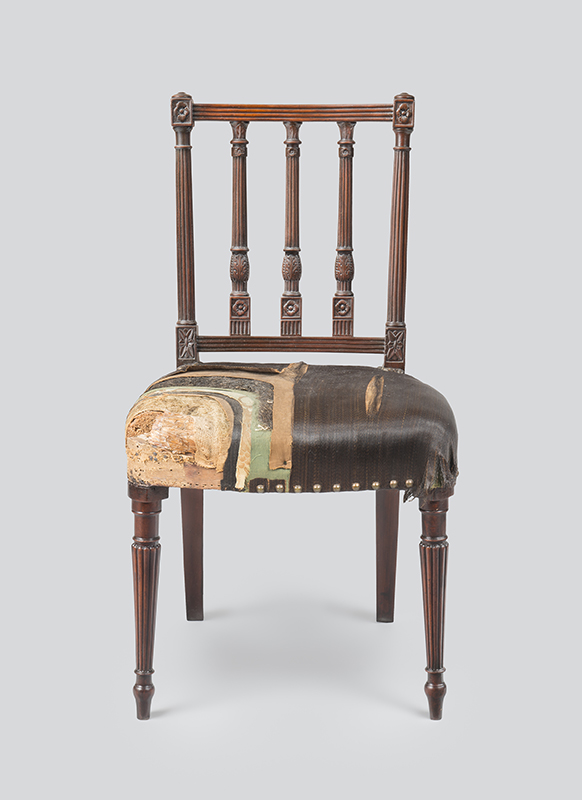
The furniture is arranged regionally—Philadelphia, southeastern Pennsylvania, New England and New York, the South, Bermuda, and Mexico—and within each region roughly chronologically. It is not a balanced presentation, with furniture from Philadelphia and southeastern Pennsylvania (250 entries) far outnumbering all the other regions (47 entries). Not to diminish in any way Kirtley’s significant accomplishment in writing this book, but the question must be asked: why not a catalogue of Philadelphia and southeastern Pennsylvania furniture from the Philadelphia Museum of Art, featuring a chapter that synthesized the voluminous scholarship on this material to date, including her own, its social context, and the generations of talented artisans who produced it? It might be argued that such an endeavor is the province of a special exhibition catalogue, but given the pre-eminence and depth of the Philadelphia Museum of Art’s collection of Philadelphia and southeastern Pennsylvania furniture, it is this reviewer’s sincere hope that this was not a missed opportunity.
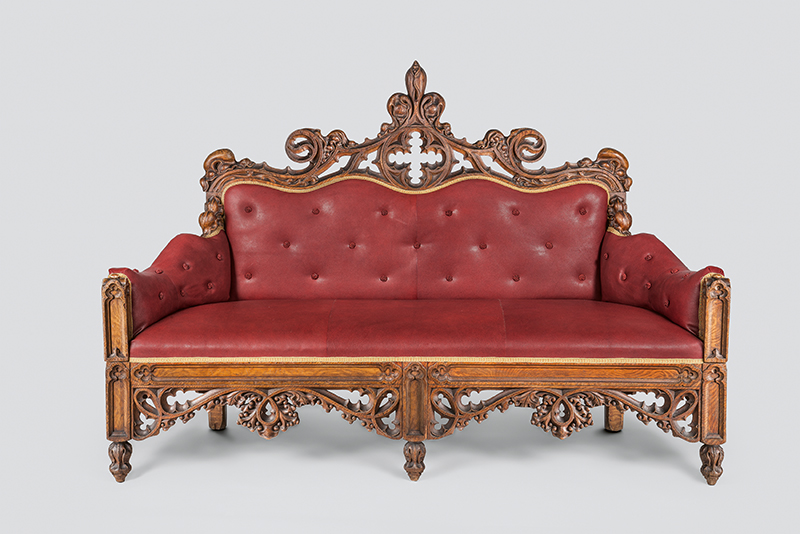
Gavin Ashworth’s photography is superb, and equal to this is the reproduction of the images on the page—blessedly, you can read the carving and the molding profiles of the furniture even in an overall view, something that cannot be said of every furniture publication. There are inventive layouts showing interesting juxtapositions of furniture— chairs and sofas in the wood and their upholstery foundations, for example. There is even a cutaway of the show covers on a chair attributed to Ephraim Haines revealing the history of its upholstery treatments (Fig. 4). To allow the images of the furniture to breathe on the page while also fitting the fairly extensive commentary, the typeface is delicate and relatively small—maybe just a little too small and trim for some readers, especially in the notes and the scholarly apparatus for the entries at the back of the book. These quibbles aside, this is a book that will reward close reading and bring joy to everyone who knows and admires the American furniture collection at the Philadelphia Museum of Art.

American Furniture, 1650–1840: Highlights from the Philadelphia Museum of Art, by Alexandra Alevizatos Kirtley (Philadelphia Museum of Art in association with Yale University Press, 2020).

